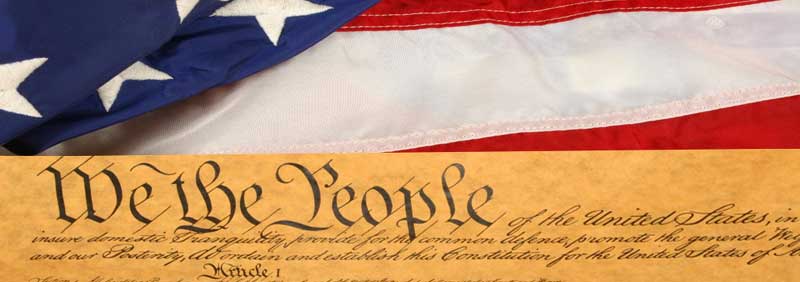
by Wes Littlefield
The United States is made up of 50 states, each with its own government, laws, and culture. But before these states joined the Union, some existed as independent, sovereign nations. These self-governing states made their own laws, minted coins, waged wars, and conducted foreign policy completely separate from any larger government entity.
What is a Sovereign State?
So, what exactly is a sovereign state? It’s a political community that is independent and has supreme authority over itself. The concept of sovereignty was extremely important to America’s Founding Fathers. When they declared independence from Britain in 1776, they wanted to ensure the new nation would not be subject to outside control ever again.
Why is Sovereignty Important to America?
America’s founders understood that sovereignty was essential for the nation if it was to be truly independent. They believed that in order for the American experiment in democracy to succeed, the United States needed to be able to govern itself without interference or domination by other nations.
Several key reasons sovereignty mattered to the founding fathers and early America:
- It allows self-determination and self-government by the people. This was the whole basis for the American Revolution – the colonists wanted to rule themselves instead of answering to a British monarch an ocean away.
- It preserves independence and freedom from foreign domination. The founders were wary of ceding too much control to outside governmental bodies after fighting hard to break away from British tyranny. Sovereignty was insurance against falling under authoritarian rule again.
- It fosters security and prosperity. With strong borders and self-governance, the newly formed United States could focus on building up its economy and providing for citizens’ welfare rather than being beholden to foreign interests. America’s vast natural resources and enterprising population necessitated sovereign control.
- It gives international legitimacy and respect. As a sovereign state, America commanded diplomatic prestige and equality with other existing world powers rather than being seen as a mere rebel province or colony. The concept enabled orderly, respected relations between independent nations.
While they first asserted sovereignty to reject oppressive authority from afar in the Declaration of Independence, America’s founders also knew that a free republic needed to be master of its own affairs in order to survive and thrive as an independent nation going forward. Sovereignty was the cornerstone for securing life, liberty and the pursuit of happiness.
Now let’s take a look at the fascinating history behind 10 states that started off as sovereign nations before joining the United States:
Vermont Republic (1777-1791)
 Before it became the 14th state, Vermont existed as the Vermont Republic, also known as the Green Mountain Republic. Settlements in the Vermont territory declared independence from Britain and New York in 1777. The independent republic operated with its own postal system, currency and constitution for 14 years before joining the Union in 1791.
Before it became the 14th state, Vermont existed as the Vermont Republic, also known as the Green Mountain Republic. Settlements in the Vermont territory declared independence from Britain and New York in 1777. The independent republic operated with its own postal system, currency and constitution for 14 years before joining the Union in 1791.
Kingdom and Republic of Hawaii (1795-1898)

The islands that now make up Hawaii were united under King Kamehameha I in 1795, establishing the Kingdom of Hawaii with its own royal dynasty. After an attempted coup overthrew the Hawaiian monarchy in 1893, the islands briefly existed as the independent Republic of Hawaii. The republic lasted until 1898 when Hawaii was annexed by the United States.
Republic of West Florida (1810)
 Today, the Florida Parishes region of Louisiana was once briefly its own country known as the Republic of West Florida. After rebel settlers seized control from Spain in 1810, the Republic of West Florida existed for just over two months before U.S. President James Madison claimed the territory on behalf of the United States.
Today, the Florida Parishes region of Louisiana was once briefly its own country known as the Republic of West Florida. After rebel settlers seized control from Spain in 1810, the Republic of West Florida existed for just over two months before U.S. President James Madison claimed the territory on behalf of the United States.
Republic of Texas (1836-1845)
 The most widely recognized sovereign state in American history is the Republic of Texas. For nearly 10 years, Texas existed as an independent nation with its own presidents and diplomats after breaking away from Mexico in 1836. The Republic of Texas joining the United States as a state in 1845 prompted the Mexican-American War.
The most widely recognized sovereign state in American history is the Republic of Texas. For nearly 10 years, Texas existed as an independent nation with its own presidents and diplomats after breaking away from Mexico in 1836. The Republic of Texas joining the United States as a state in 1845 prompted the Mexican-American War.
Republic of Rio Grande (1840)

Lasting less than a year in 1840 was the Republic of Rio Grande in what is now northern Mexico and southern Texas. After splitting from Mexico, the Republic of Rio Grande tried to convince the Republic of Texas to join them in a federation. But the new nation quickly collapsed after just five months.
Provisional Government of Oregon (1843-1849)
 For six years prior to becoming an official U.S. territory, American settlers in the Oregon Country set up an unofficial provisional government. The organizing committee had no authority from the U.S government but sought to establish order until statehood could be granted. The Provisional Government of Oregon enacted laws prohibiting slavery and requiring public education.
For six years prior to becoming an official U.S. territory, American settlers in the Oregon Country set up an unofficial provisional government. The organizing committee had no authority from the U.S government but sought to establish order until statehood could be granted. The Provisional Government of Oregon enacted laws prohibiting slavery and requiring public education.
California Republic (1846)
 The present-day state of California was briefly home to an independent republic prior to annexation by the United States after the Mexican-American War in 1846. American settler John A. Sutter in California established the Bear Flag Republic, named for the iconic bear image on their made-up flag. The hastily declared nation lasted less than a month before U.S. forces arrived and took over.
The present-day state of California was briefly home to an independent republic prior to annexation by the United States after the Mexican-American War in 1846. American settler John A. Sutter in California established the Bear Flag Republic, named for the iconic bear image on their made-up flag. The hastily declared nation lasted less than a month before U.S. forces arrived and took over.
State of Deseret (1849-1850)
 Utah’s early Mormon pioneers petitioned for statehood in 1849 under the proposed name of “State of Deseret.” Instead, the U.S. government created the smaller Utah Territory in 1850. Had the initial bid for expansive borders succeeded, Deseret would have also included most of Nevada and Arizona along with parts of four other states.
Utah’s early Mormon pioneers petitioned for statehood in 1849 under the proposed name of “State of Deseret.” Instead, the U.S. government created the smaller Utah Territory in 1850. Had the initial bid for expansive borders succeeded, Deseret would have also included most of Nevada and Arizona along with parts of four other states.
Republic of Sonora (1853-1854)
 The Republic of Sonora was an unauthorized territory briefly declared independent by a band of American filibusters invading Mexico in 1853. They managed to seize parts of the Mexican states Sonora and Baja California before retreating as Mexican forces overpowered them after six months. Backed by America’s minister to Mexico, the exiled rebels tried founding New Virginia colony in Honduras but failed yet again.
The Republic of Sonora was an unauthorized territory briefly declared independent by a band of American filibusters invading Mexico in 1853. They managed to seize parts of the Mexican states Sonora and Baja California before retreating as Mexican forces overpowered them after six months. Backed by America’s minister to Mexico, the exiled rebels tried founding New Virginia colony in Honduras but failed yet again.
Republic of Baja California (1853-1854)
 The same filibuster expedition responsible for the Republic of Sonora also proclaimed independence over Baja California at one point the following year. The would-be supreme ruler, William Walker, established the Republic of Baja California and declared himself president. But he was forced to retreat back to the U.S. after pushback from Mexican authorities, lasting barely three months as a nation.
The same filibuster expedition responsible for the Republic of Sonora also proclaimed independence over Baja California at one point the following year. The would-be supreme ruler, William Walker, established the Republic of Baja California and declared himself president. But he was forced to retreat back to the U.S. after pushback from Mexican authorities, lasting barely three months as a nation.
In total, at least ten states or parts of states once existed as sovereign countries before eventually folding into the United States of America as we know it today.
Their unique histories testify to both the independent spirit running through America as well as the perpetual push and pull between autonomy and unity present since its founding.
By Wes Littlefield, Ammo.com, for Legends of America, submitted March 2024.

Wes Littlefield
About the Author: Wes grew up on a small farm where his love for history blossomed early in life while he hunted arrowheads with his dad. History was always one of his favorite topics in school, and to this day, he enjoys listening to history podcasts (probably about the Wild West) and researching family histories (His grandma claimed to be a Native American Princess, and his grandpa claims to be related to Jesse James).
When he’s not outdoors hunting, fishing, playing disc golf, or camping with his friends and family, he’s probably thinking about the Roman Empire! Find Wes Littlefield online:
LinkedIn
YouTube
WesleyLittlefield.com
Ammo.com
Also See:
Outbreak of the American Revolution
Westward Expansion and Manifest Destiny
The United States Bill of Rights
